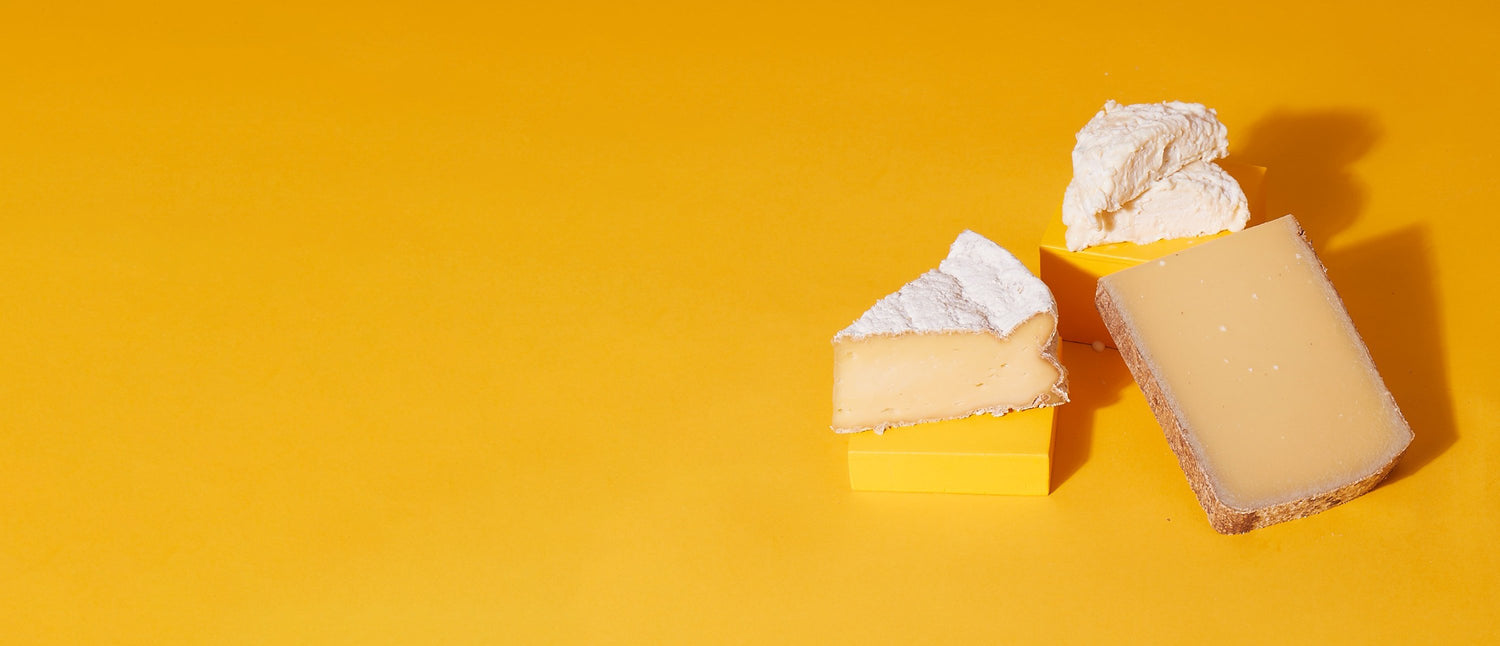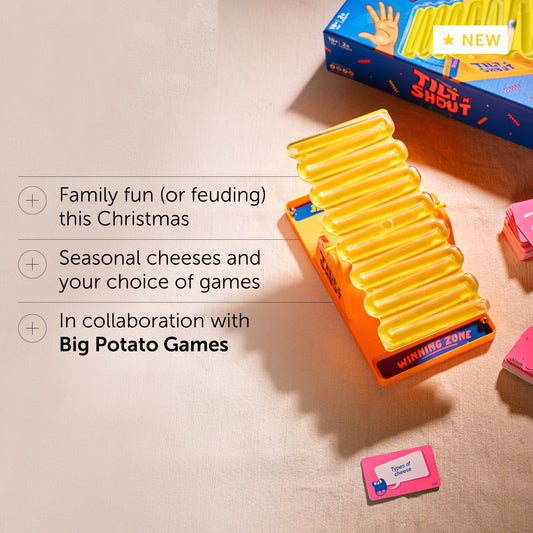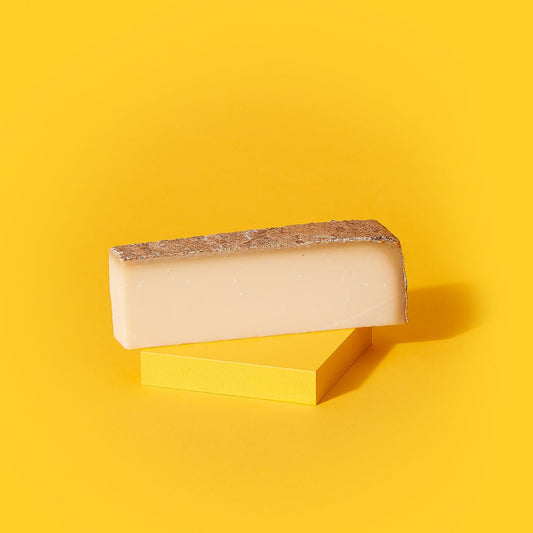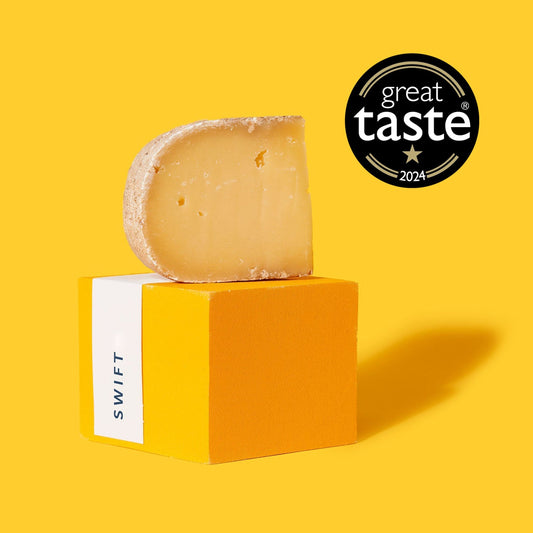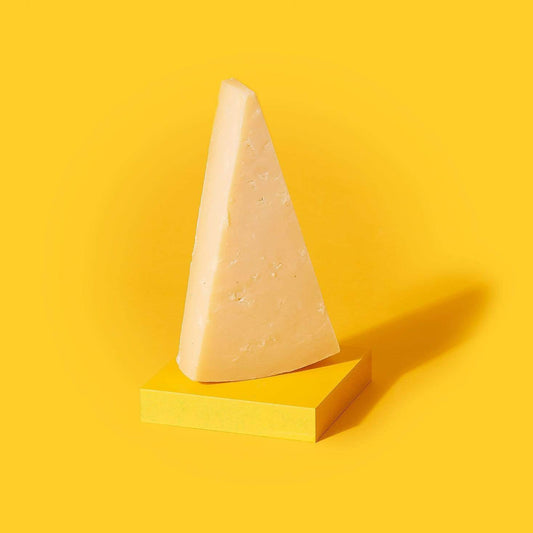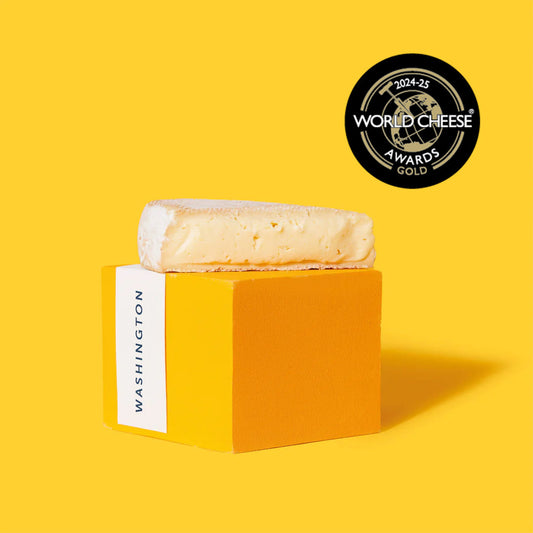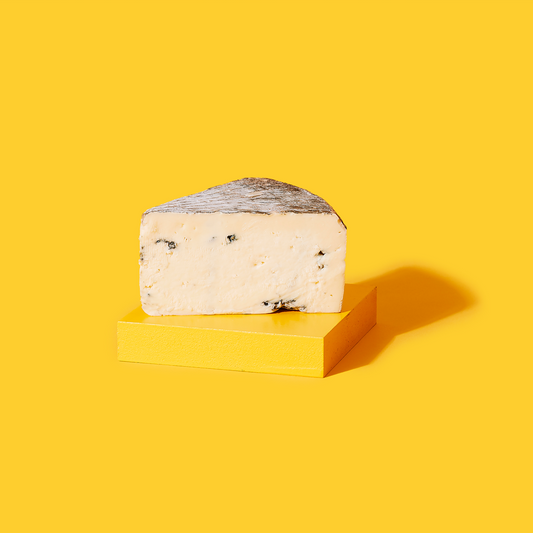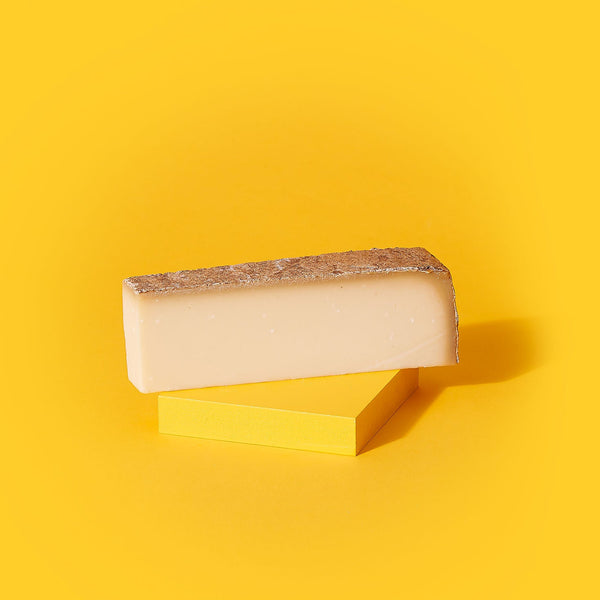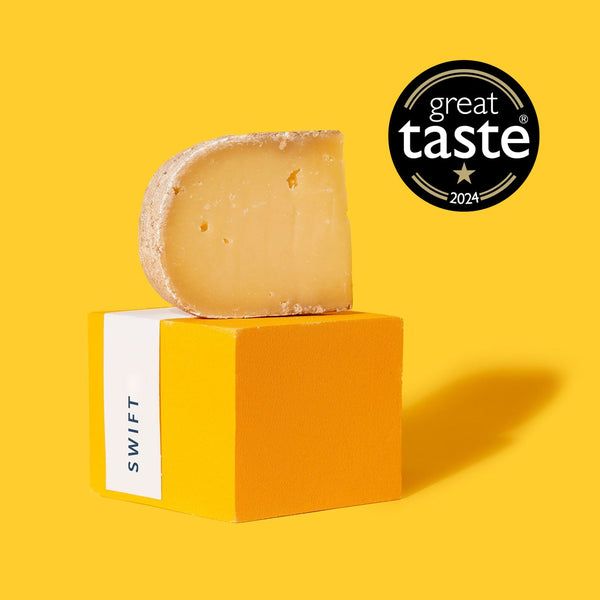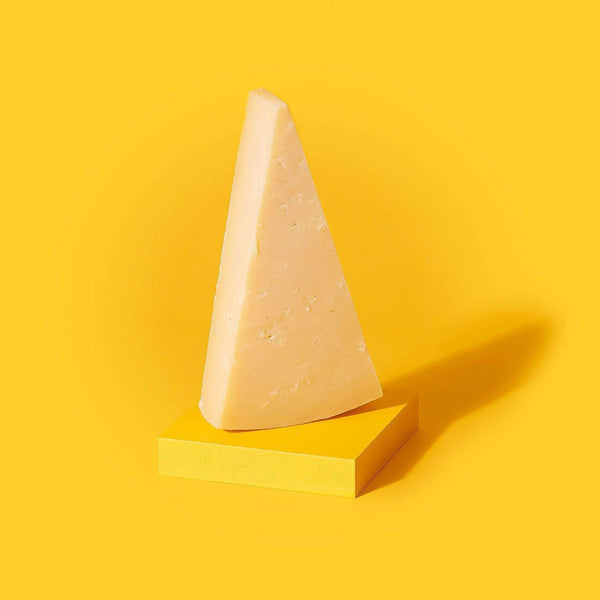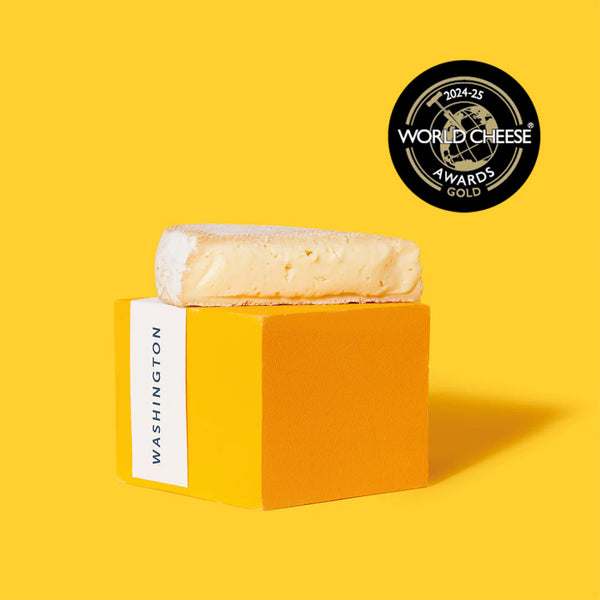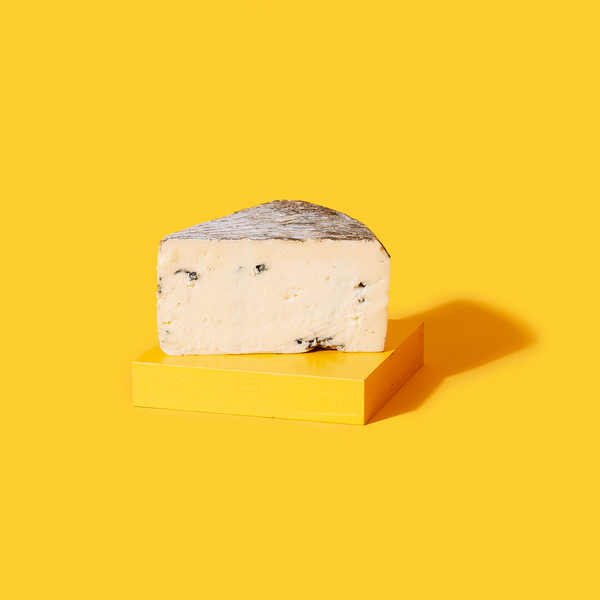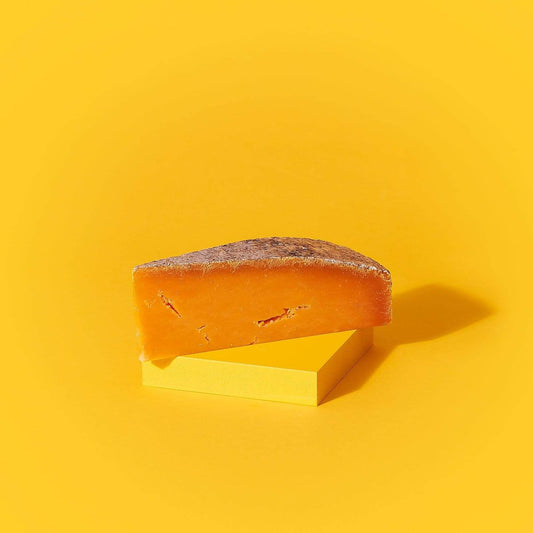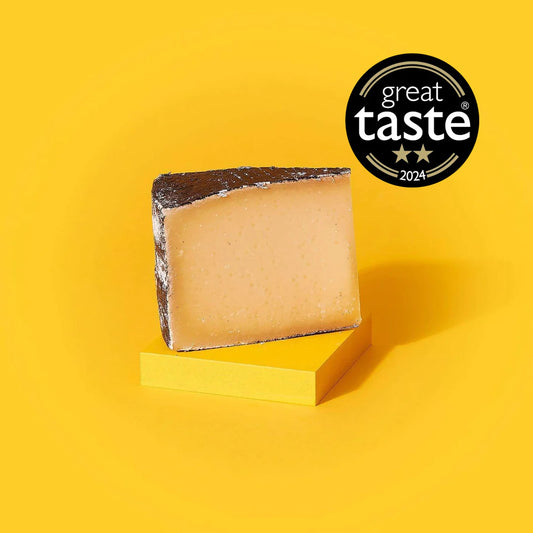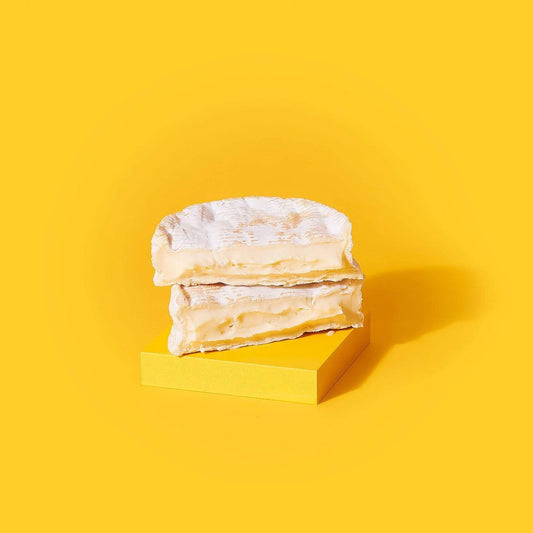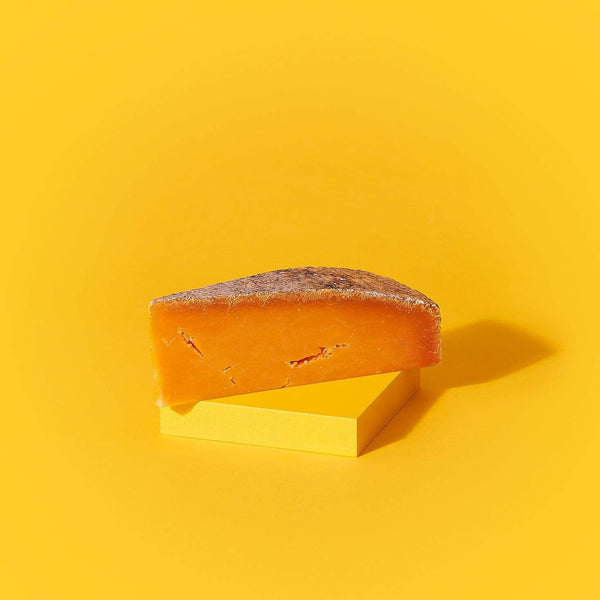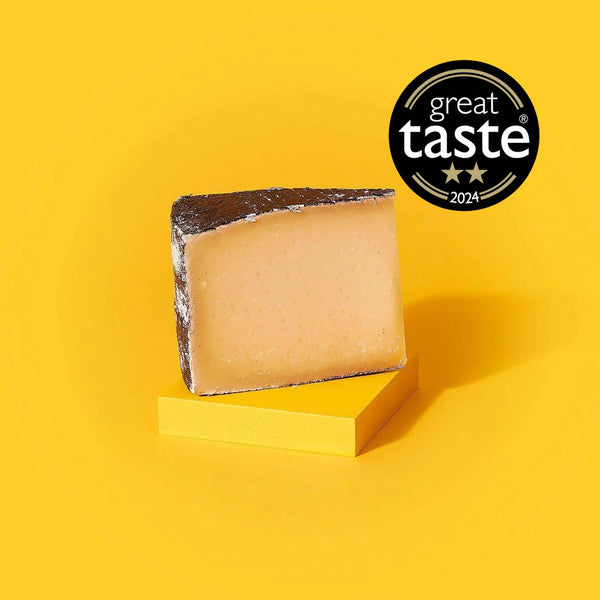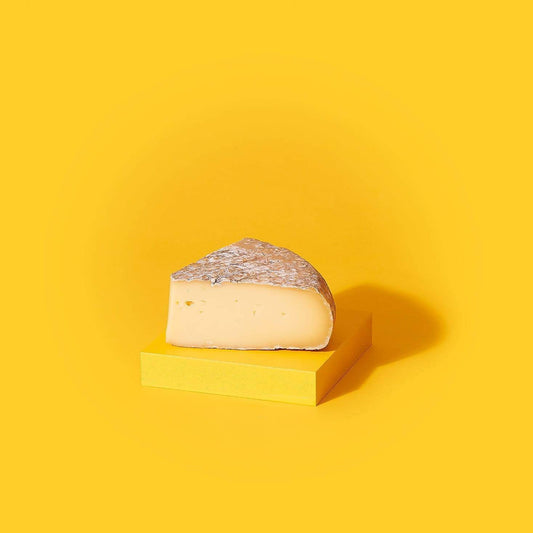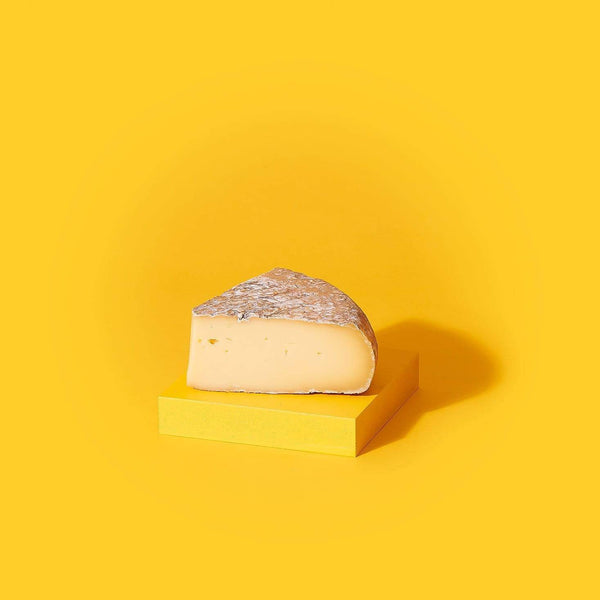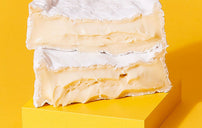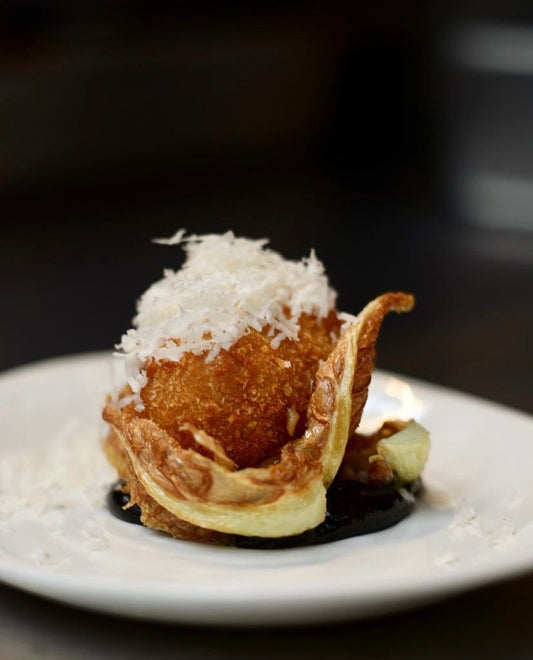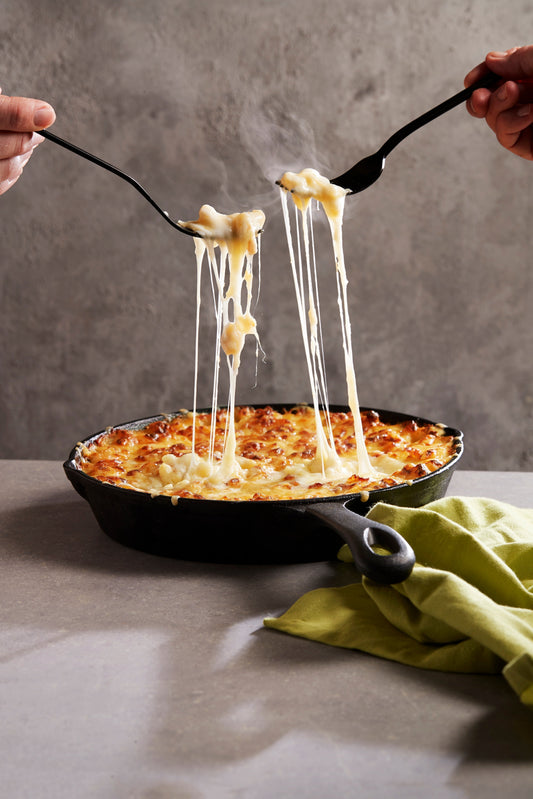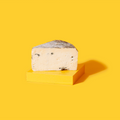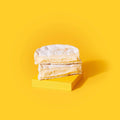Share
We all have our favourite hard cheeses, and let's be real, there are some damn good hard cheeses out there. Whether it’s a gorgeous Gruyere or a classic Cheddar, it’s difficult not to have your best-loved. It’s time to get a little geeky and go through a few facts.
Characterising traits of hard-cheeses.
A little bit of hard cheese really can go a long way. You know that salivating sensation when you consume a little square of Old Winchester or chunk of Cornish Kern (we just wanted to remind you of that really). Cheeses like these are dense and low in moisture, meaning they are inherently more durable. As well as this, as they mature, and lactose converts to lactic acid, the cheese becomes so acidic and dry (as more moisture evaporates) that it is almost impossible for any nasties to develop, and spoil the cheese. This also means that they can be transported and left out for a lot longer than a softer cheese (this was the whole basis for developing the gouda style of cheese - protected in a wax coating, dry, dense and designed to mature over years, staying in perfect condition as it was shipped from Amsterdam around the world). It is often said that a great hard cheese is the backbone of any cheeseboard. They add textural diversity alongside a chiseled shape when cut, which only adds structure and profile to the board itself.
First some FAQs on the hard cheeses:
What is hard cheese?
Hard cheese is primarily just a cheese that has been left to mature (age) for longer than soft cheeses and is, therefore, lower in moisture and higher in fat content. In addition, during the make, more whey is generally expelled from the curds, resulting in smaller, drier curds than you would find in a fresher/soft cheese. The curds result from coagulation by milk proteins or enzymes and culture acids and, and can be cooked at a temperature as high as 55 degrees celsius after the curds are finely chopped. There are two main categories - hard and semi-hard, typically semi-hard cheeses such as Cheshire, Lancashire and Wensleydale are aged from anything between 1-6 months, whereas hard cheeses such as mature cheddar, gouda, comte or parmesan are generally aged for anything between 12-36 months. The longer a hard cheese is aged, the more depth and complexity of flavour it will generally develop. Many hard cheeses, such as gouda or comte will also develop crunchy amino acid crystals (called Tyrosine). Hard cheeses will generally develop hard, dense (and eventually crumbly almost dusty) rinds that are natural (and therefore edible) but not particularly tasty after 18mths or so
Firm, sharp and sophisticated, with strong nutty and meaty/umami notes, a hard cheese really can win over your heart.
What is Clothbound Cheddar?
Clothbound cheddars have a much drier and crumblier texture in comparison to standard cheddar, which is generally matured in plastic. This is because plastic is a perfectly impermeable barrier, meaning no moisture can escape the cheese, and no air can get to the cheese. Clothbound cheddar is exactly what it says in on tin, it is wrapped and aged in cloth, and then rubbed in lard. This means some air can still get into the cheese, and the cheese can lose some moisture. This means a generally drier cheese, but also a far more complex flavour as the cheese develops a rind on the surface, which encourages mould growth, which in turn imparts flavour into the cheese.. Best served with a lush pinot noir or a sweet riesling.
Why is there such a difference in taste between mild and mature cheeses?
It really is all just down to the length of aging. The longer the cheese is left to mature and develop, more time air and moulds have to develop on the rind, and burrow into the cheese itself, bring with them huge flavour development. In addition, the cultures added during the cheesemaking process have more time to metabolise the lactose (protein naturally found in milk) to lactic acid, which in turn generate multiple flavour profiles.
Why do some hard cheeses tend to melt better than soft or semi-soft?
We all know that mesmerising sight, as cheese slowly melts, changing itself in the most wonderful of ways. The oozy goodness appearing right before our eyes - feeling hungry yet? Well - ever wonder why some cheeses melt a lot better than others? Some cheeses like a feta or a soft goat’s cheese don’t exactly have the same slow gooey process as our Gouda like Coolea or a Westcombe Cheddar. It’s all down to the constituent distribution of the protein, fat and water within the cheese. The higher the fat and water content in a cheese, the less protein there is. The proteins are therefore able to break down quicker seeing that it is weaker. The pH of a cheese also makes a difference. Cheeses with a low pH, which are primarily soft cheeses such as cottage cheese result in tightly bound proteins which are much harder to break down and colllapse and therefore melt. That’s why a cheese like mozzarella, though classified as soft melts so well, because it has a perfectly neutral pH, so loosely bound proteins.
Types of Semi-Hard Cheese
Cheddar
Not that this guy needs any sort of introduction, this British king has found itself becoming world famous and is one of the most popular cheeses to cook with. Maturity varies between a few months to over two years. Montgomery’s Cheddar for example is aged for 12 months and has a nutty flavour with grassy, farmy aromas. Whereas, Quicke’s Vintage Cheddar is left maturing for 24 months, so is left with a depth of flavours, ranging from umami and mustard to buttery to salted caramel.

Gruyere
The gorgeous Gruyere, comes with a rich history. Although usually defined as a Swiss Cheese, given that it was founded and developed in the Swiss Mountains in the 12 century, there are some dilemmas. The Mountain range is so close to the French border, that there are a variety of other gruyere-like cheeses such as Comte, which falls under the Gruyere category (often referred to as Gruyere de Comte). Incidentally, Comte is the highest produced French PDO cheese! We love both our Gruyere and Comte at around 16-22 months, which results in the beautiful cross section of rich flavours of wildflower, sweet-meadow and grass of a younger (around 12mths) cheese and the deeper, more umami, meaty and roasted nut flavours of an older cheese (around 24mths plus), which is matched with a smooth texture and crunchy crystals. We also really love the cheeses when they are made with summer milk, when the cows are at altitude, munching on rich meadow grass and flora. An old wives tale claims that in 161 AD, an Emperor called Antonin actually died from eating too much Gruyere.. Honestly, when it comes to kicking the bucket, what a way to go...
Types of Hard Cheese
Romano Pecorino
This Italian classic is made from sheep’s milk and has had the same production method for the last 2000 years! Romano doesn’t actually refer to Rome, both rather Romans, given just how old this charmer is. It is both salty and firm, perfect for grating over pasta or salad. Village Maid has taken on the classic Italian and thrown a spin on it with Spenwood, which is matured over a 6-9 month period. She goes from sweet and milky to a more meaty, funky teenager within a few months. We recommend pairing this with a Cabernet Sauvignon.
Manchego
Probably the most well-known Sheep’s milk cheese from Spain, Manchego’s crumbly and rich texture goes beautifully on a cheese or antipasti board. It can be aged for 3-12 months, but ours receives maximum maturing, for maximum flavours. It has a wonderful graininess, which adds fantastic texture, alongside a nutty, honey floral-like flavour. This Spanish Chico truly is a first-class act. Some British alternatives to Manchego are Berkswell and Lord of the Hundreds.
All in all hard cheese has a variety or distinct, robust flavours that can set your taste buds somersaulting.
So, here’s your heroic hard cheese buyer’s guide:
For those who aren’t into anything too strong.

Appleby’s Cheshire - A clothbound beauty, that is full-bodied yet light, moist yet still has a slight crumble.
Cornish Yarg - A relatively hard cheese that still contains a lovely level of moisture resulting in a wonderful texture and a good level of crumble.
For those who fancy a little something stronger.
Pitchfork Cheddar - This cheddar is clothbound and has an incredible complexity, with a sound balance. You’ll find a farm-like tang, a buttery undercoat with an earthy breakdown in the mouth.
Cornish Kern - Made in the style of a gouda, this guy has multiple dimensions given the use of alpine starter culture. Balanced yet subtle, this cheese gives so much.
For the hard-core strong lovers
Heckfield - This rarity is something similar to a cheddar, however its incredible Guernsey milk really makes it a hardy treasure with a creamy, buttery texture.
Parmesan - Of course this Italian jewel has to be mentioned. It has a hard natural rind with a dense, crunchy texture. Unbeatable in the cheese world.

